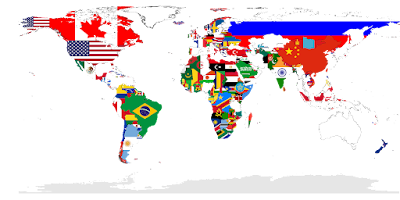As time passes, the language and terms used in a specific
business’s operations becomes nuanced and unique to the organization. One of many synonyms rises to the top,
becoming the default for a commonly expressed idea. A term with multiple
definitions settles into one permanently.
For example, most businesses use terms like “monitor” and “screen”
to describe computer hardware used to display visual information. However, for
those in the health care industry, these terms are instead verbs used in
reference to assessing and keeping track of a patient’s health.
For technical writers and marketing directors, these nuances
are confusing enough in English, let alone having the text translated into
multiple languages. The confusion increases exponentially and there is a
greater risk of rework which can potentially increase a translation project’s
cost by as much as 15%.
To mitigate this risk, PLG uses translation glossaries.
What is a Glossary and How is it Created?
Glossaries (otherwise known as lexicon, term base, or
terminology collection) are a collection of terms identified by our
translators. After analyzing your document(s) for wordcount, repetitions, and
translation memory matches, we take things a step further by picking out terms
that have either high frequency or importance.
Each term is translated and the translator then inserts a definition and additional notes on usage and context. Thus, a glossary is created! It
is specific to the client’s preferences and acts as an important guide for
translators.
If your business has native-speaking experts (staff or
clients), we ask that these individuals review the glossaries for accuracy.
Their approval helps us gain further clarity on how to approach translating not
just the text but the style and tone.
If your business does not have these kinds of resources, not
to worry! It is our professional responsibility to verify the glossary translations through
research, review of previous translations, and interviews. In our 3 decades of
operation, we have developed procedures to ensure glossaries are verified in
cases wherein the client cannot provide approval.
We primarily use glossaries for our technical
document translation services. They can also be used for marketing translations
which you can learn about HERE.
How Does This Tool Aid in Technical Translation?
The glossary helps the translator in a myriad of ways. By
clarifying how the most important and potentially confusing terms should be
translated at the outset, each instance of every term on the glossary will be
translated with consistency across entire documents and even across all future
projects.
Furthermore, although PLG prefers to assign one translator
to each business, if a rush project calls for multiple translators to split a
project up, the glossary ensures that across each different individual, all
terms are translated in the exact same way.
This tool also influences the translator’s understanding of
the business’s preferences for style and tone of translation. Additionally, the
translator has a tool to reference should other confusing words appear.
Glossaries enforce consistency and reduce uncertainty. Risk
of rework (when a translation client sends the project back with notes and
edits) is mitigated and the project benefits from reduced cost and turnaround
times.
You can learn more about our technical translation services
HERE.
Glossaries Usage in Conjunction with Other Translation
Tools
In addition to the glossary, we also use our translation
memory software to aid in reducing cost and turnaround and enforcing
consistency. This tool captures translations from all previous projects and
cross references these with your current project. Any phrases that match a
previous translated phrase exactly will be identified for the translator.
Read more about our translation memory clicking HERE.
PLG’s Principles for an Effective Glossary
Below are principles we follow to ensure technical document
translations and marketing material translations are as accurate as possible:
- Glossaries must be mutually exclusive and
collectively exhaustive. Meaning terms like “computer”, “hard drive”, and
“computer hard drive” do not appear as separate instances.
- The glossary will contain terms specific to each
client. We will not let broadly related documents influence our term
collections. Instead, we will only draw from your materials and previous
projects with your company.
- The glossary should be as short as possible,
making it easier for the translator to use and navigate.
- Glossaries should contain more than just terms and
translations. Definitions and notes on context are equally as important.
- The glossary should contain a list of terms that should not be
translated (product names, initiatives, program titles, etc.)
3 Glossary Creation Tips
In helping PLG create an effective Glossary for your
technical translations, please use the following 3 tips:
- Focus on providing us with User Facing Documents
for reference. These resources have higher liability and reflect how a company
wants to be seen.
- Identify any local experts either on staff or on
your client’s staff that can assist in approving our translations.
- Ensure the dialect is correct at the outset by
notifying us of where you intend to present your translations. For example:
European French vs Canadian French, Latin American Spanish vs. Spanish for
Spain, Traditional vs. Simplified Chinese, etc
Technical Translations Require Comprehensive Glossaries
By arming yourself with a greater understanding of
Glossaries and how they can improve your technical translations, PLG can work
with you to reduce cost and turnaround time for all future projects. Thank you
for reading, reach out if you have any additional questions and request a
quotation today!












